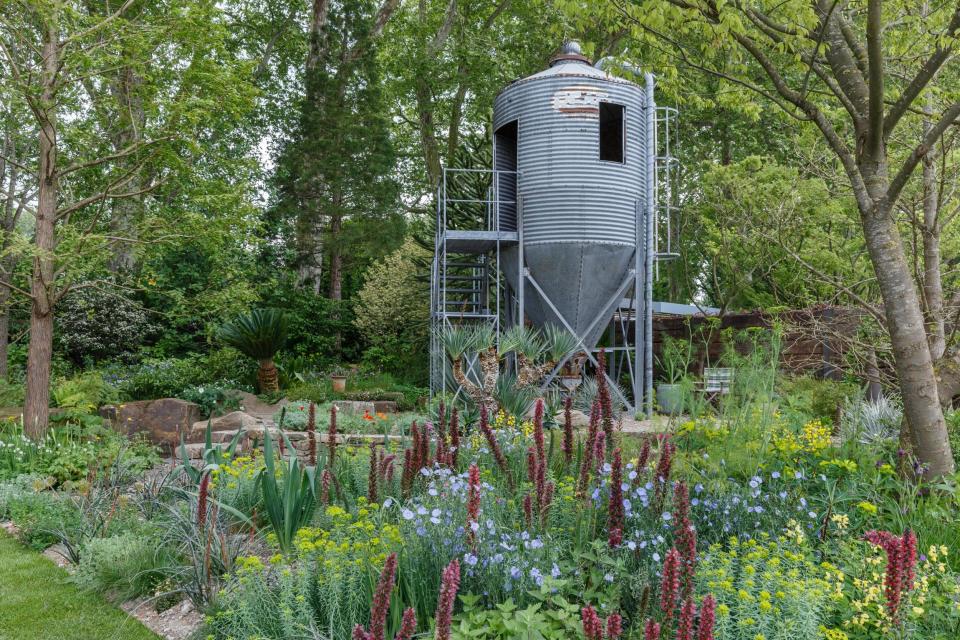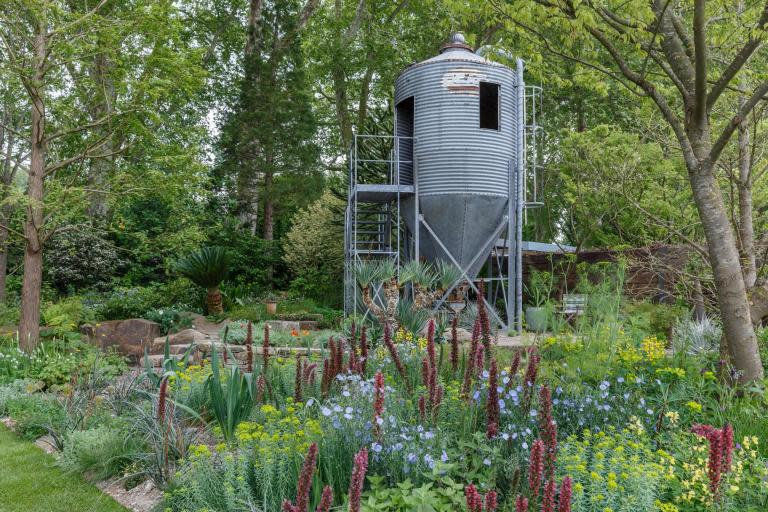Chelsea Flower Show 2019: 5 awe-inspiring gardens tackling climate change
‘Sustainability’, ‘renewable energy’, ‘clean air’, ‘plastic free’, these are the buzzwords circulating around the RHS Chelsea Flower Show this year. Concern about climate change is widespread, an almost palpable anguish sits amidst beds and borders, and the message is loud and clear: things need to change.
“We’re in a global climate change disaster,” RHS Ambassador Baroness Benjamin OBE explains. “We’ve got to start reinventing ourselves and creating a different world to deal with it.
“Look at Chelsea – the beauty of Chelsea, the nature of Chelsea. The environment is such an incredible gift that we human beings have been given and yet we’re squandering it. We’re just chucking it away and we’ve got to stop – stop, and take action.”
This year’s show answers the call. From introducing new plant species to generating electricity through plant technology, multiple ways in which man can work in tandem with nature to battle climate change are visible to all who venture into the world-famous horticultural haven this week.
For those not in possession of a golden (green) ticket, discover how five special gardens are supporting the environment below.
The Harmonious Garden of Life
Designer: Laurélie de la Salle
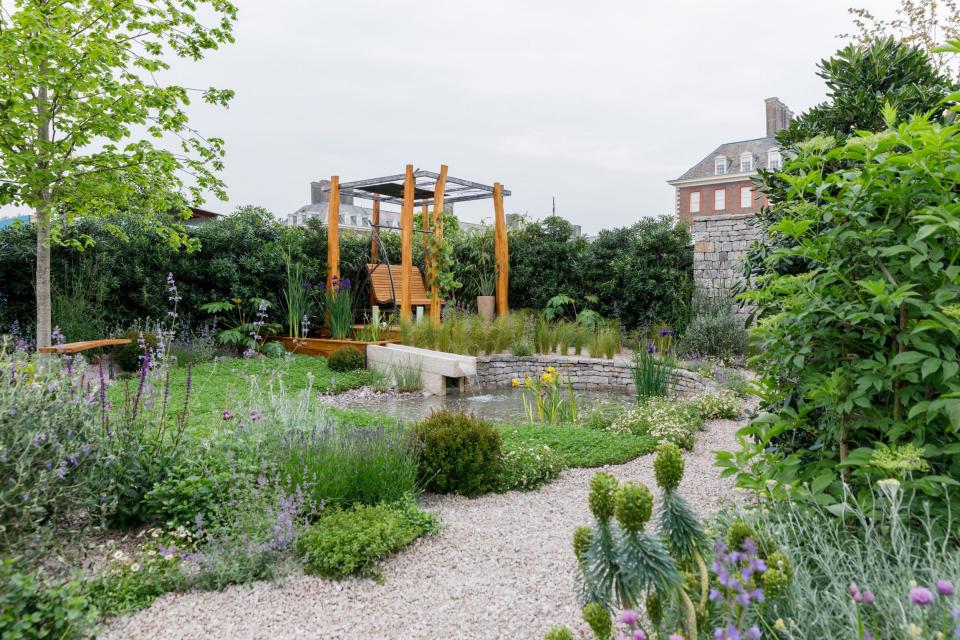
“Right now, sustainability is not an option, it’s a priority,” says Laurélie de la Salle, designer of The Harmonious Garden of Life. A space centring on ‘positive interactions between kingdoms and elements’, it takes inspiration from de la Salle’s home in the South of France – showing off plants indigenous to the region – and includes a number of environmentally-friendly features.
A swing chair, for instance, activates water circulation in the stone canal and waterfall when rocked, whilst the water itself is filtered by the irises and typha growing within the pool. Bamboo use is extensive, a plant which “regenerates the air”, de la Salle explains, creating “30% more oxygen than all the other plants”, and photoluminescent gravel lines the pathways glowing at night, negating the need for outdoor lighting.
“This concept of regeneration through kingdoms and elements can be done everywhere on the earth,” says de la Salle. “My goal is to send the message that beautiful gardens can be sustainable as well.”
The Resilience Garden
An initiative of the William Robinson Gravetye Charity
Designer: Sarah Eberle
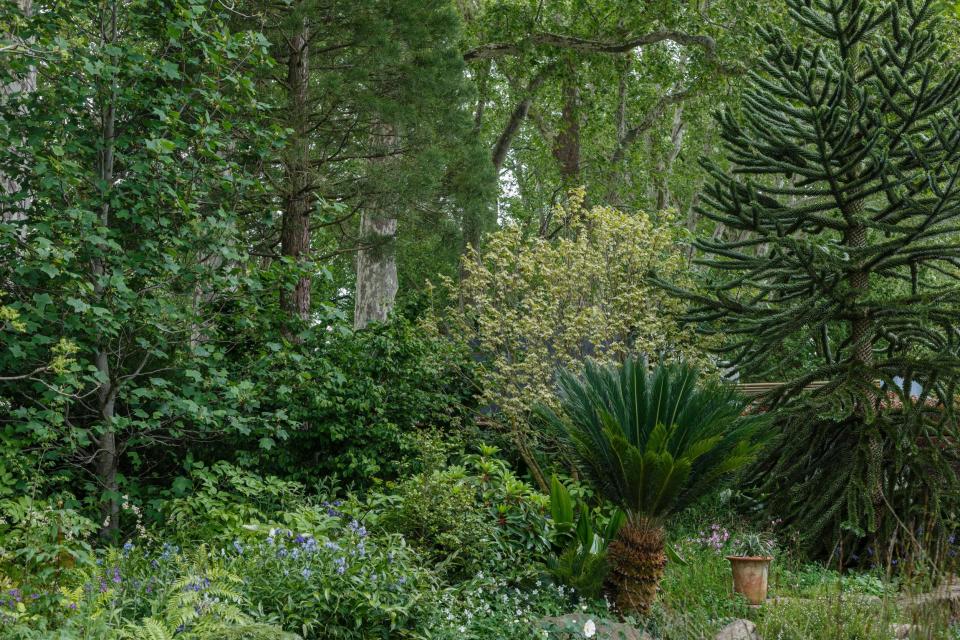
With over 140 species of plants, Sarah Eberle’s design sets out to mirror the impact climate change is having on our environment – and will continue to have – while demonstrating some of the ways in which we can adapt our habitat to accommodate it.
The Resilience Garden, created in celebration of the 100th anniversary of the Forestry Commission, promotes the idea of ‘resilience through diversity’ – encouraging the growth of new hardy species to mitigate the havoc pests and disease are currently wreaking on many of our indigenous trees.
“We need to think beyond just our current stock because they are under threat,” Eberle explains. “We’ve lost all our elms, our ashes have died, we have horse chestnut canker, we have oak decline. We have to think about diversity and introducing species – whether it’s for timber, insect pollination or absorption of carbon.”
Nestled in Eberle’s display, visitors will spot ginkgo – an ancient tree species which has been discovered in million-year-old fossils and was able to withstand the impact of Hiroshima’s atomic bomb – monkey puzzle, which can endure a wide variety of soil types, and Japanese cedar, a swift-growing species and possible timber solution.
“It’s about creating genetic diversity and allowing the plants to begin to fight back,” Eberle says. “Quite rightly, we’re very protective of our native landscape but it’s changing. And we have to, at some point, accept that… When we have no ash left, when we have no elm left, what happens if we have no oak? We have to do something.”
“There is definite hope,” she adds. “And this garden is what that’s about. We can do this.”
Silent Pool Gin Garden
Designer: David Neale
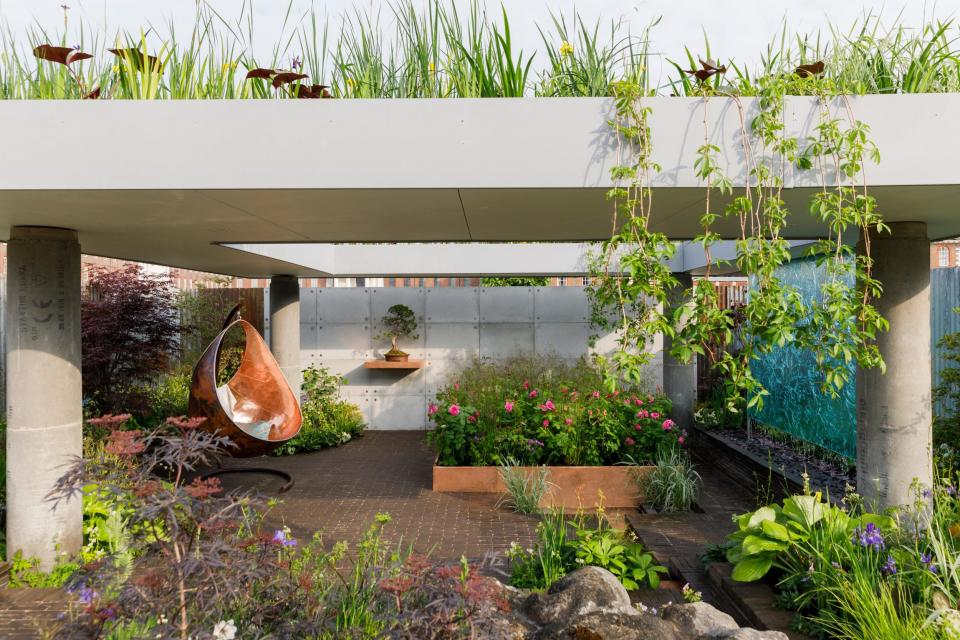
Using plants and their soil to create sustainable and environmentally-friendly electricity: this was the idea behind David Neale’s ‘Surrey Hills’ design, created in collaboration with Silent Pool Gin, the University of Sussex and Dutch tech firm, Plant-e.
How is this possible? It comes down to two microbial fuel cells hidden in the garden’s pavilion ‘flowerbed’ roof. Through these electrodes, organic matter from plant photosynthesis is converted into electricity and used to power small LED lights situated in the garden below.
Of course, this ‘plant technology’ is nothing new; children have been using potatoes as batteries in science labs for years. But unlike those experiments, which ultimately killed the plant, Neale and his team were adamant to work with nature.
“Plant-e have managed to generate a carbon-tipped electrode that goes into the soil, so it doesn’t kill the host plant,” Neale explains. “The plant is working and we’re working with the plant; the plant’s giving us back energy and we’re watering it and nurturing it and giving it life. I just love that, it’s a simple link and it has great potential.”
The Savills and David Harber Garden
Designer: Andrew Duff
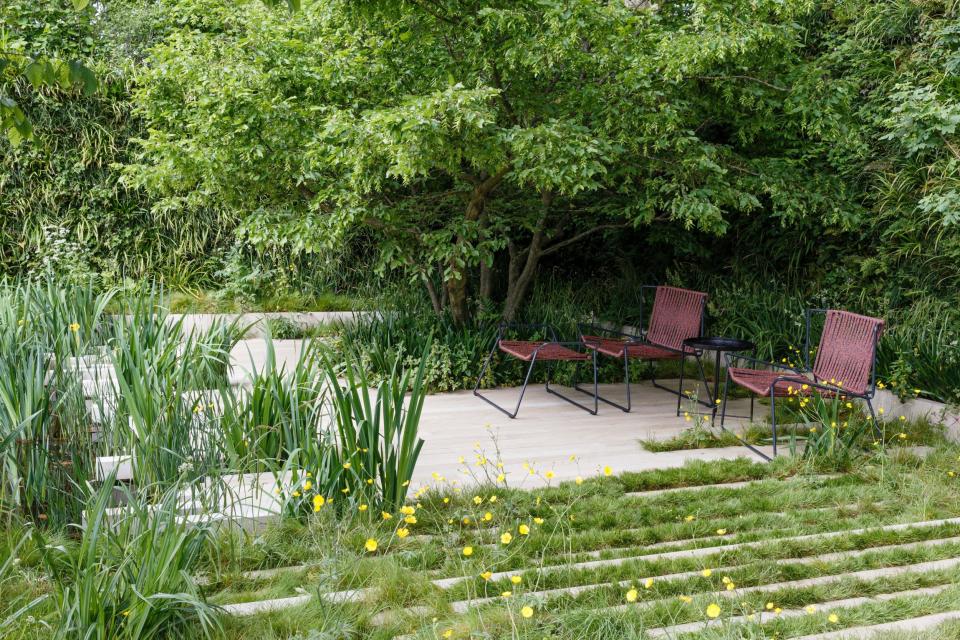
‘Clean air’ was very much a focus for Andrew Duff when it came to creating his design for the Savills and David Harber Garden, endorsed by the Environmental Change Institute.
It features a 32m x 3m green wall – “full of ferns so it’s filtering the harmful particles out of the air and giving loads of oxygen,” Duff explains – as well as bio-diverse trees plus it also includes a water purifying wetland area.
“The idea is that it’s a space that works really hard, but at the same time, is aesthetically beautiful […] and good for us, physically and mentally,” says Duff. “We’re cottoning on to mental health now, but we’re really behind in this country. In places like Japan, instead of giving medication for mental health [issues] they prescribe forest bathing – so you’re in a forest for 45 minutes. It’s quite incredible, so I think it’s going to be the next big thing in this country.”
Floella’s Future
Designer: The Birmingham City Council
Supported by Baroness Floella Benjamin OBE
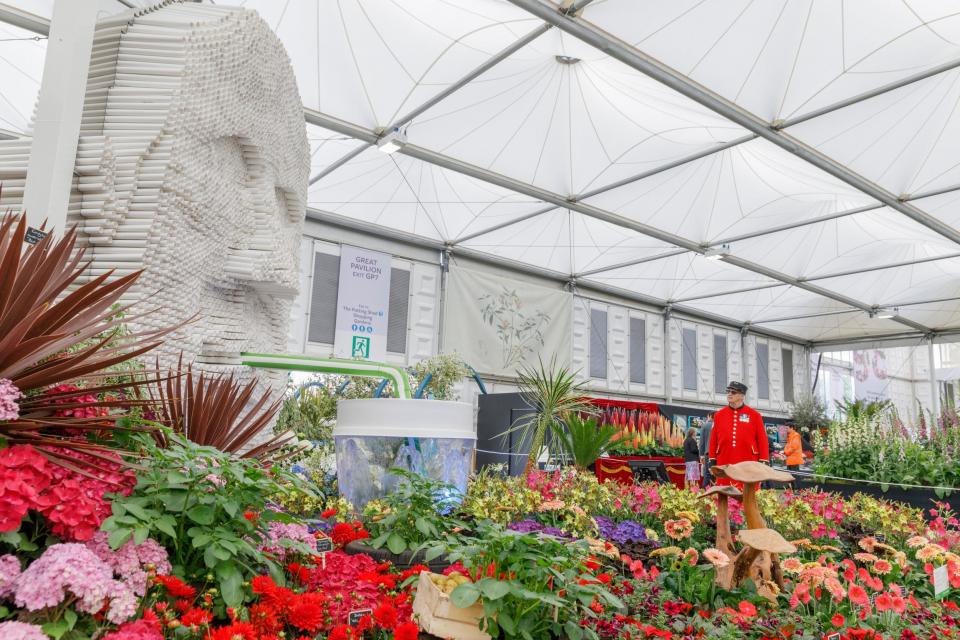
Promoting five themes – sustainability, water conservation, clean air, waste reduction and community involvement – the Birmingham City Council’s garden's main feature is a 3m-high sculpture of a human head. IDrinking through a straw, it is made up of 3,000 tubes - symbolic of the plastic straws still used frequently throughout the city.
“We’ve got quite a lot of bars and businesses that still use plastic straws in Birmingham, so we wanted a simple message of what an individual can do to make a difference,” says Birmingham City Council’s Assistant Director Darren Share. “If you go into a pub, ask for either a paper straw rather than a plastic straw, or say ‘I don’t want that’. Start to change the culture.”
Including, as well, a model of an electric refuse truck used in Birmingham in 1958 – that’s right, an electric truck in the Fifties – and a greenhouse designed out of plastic bottles, the garden (named ‘Floella’s Future’ after Baroness Floella Benjamin OBE who supported the project) is designed to be forward-looking: how can plants be used to improve air quality and how water can be better conserved, it asks.
“This garden is showing you how you can be educated, how you can explore, how you can question, how you can celebrate the environment, and find out what we can do to reverse climate change,” says Baroness Benjamin.
“And it’s about the use of plastics. It’s about the use of materials that we shouldn’t really be using. We’ve almost sleepwalked into a disaster and we’ve now got to reverse it.”

 Yahoo News
Yahoo News 